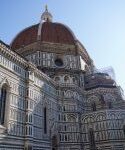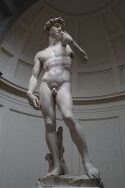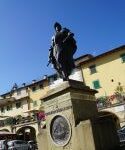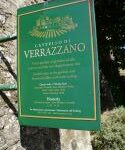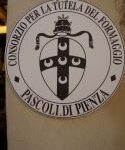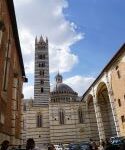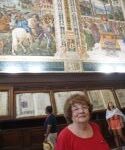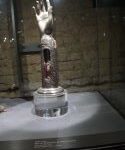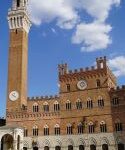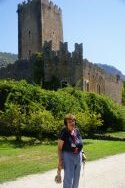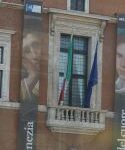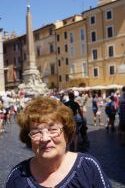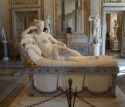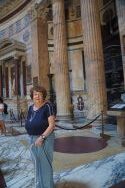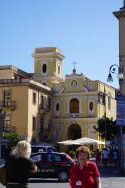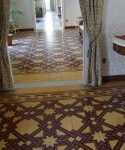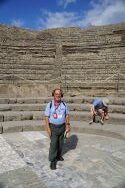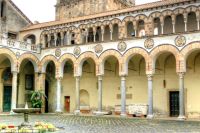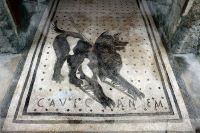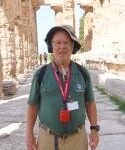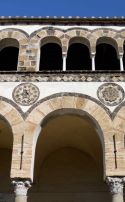Villa de Leyva January 3, 2018
 The trip to this city took root over a year ago when, in Cartagena, I read in the Lonely Planet guidebook that Villa de Leyva was one of the best preserved colonial cities in South America. That and about $5 leftover Colombian pesos closed the deal for me.
The trip to this city took root over a year ago when, in Cartagena, I read in the Lonely Planet guidebook that Villa de Leyva was one of the best preserved colonial cities in South America. That and about $5 leftover Colombian pesos closed the deal for me.
It’s day three of our trip to inland Colombia, but we just arrived here in Villa de Leyva a few hours ago, having flown to Bogota and spent two nights there.
A few observations on that capital city—of 7-10 million people on the savannah de Bacata, a plateau in the Andes that stretches several hundred miles (Bogota is at 4 degrees, 37 minutes north of the equator, at 8600 feet). The climate in Bogota is almost always the same, we were told; 66 during the day, 45 at night—only about a 75 degree difference from this week in Bloomington. That difference (the 10 degrees below in Bloomington) nearly cut short our trip by a day, since when we got to the airport Monday afternoon, I saw the dreaded “flight delayed” on the board, and a “We’ll do our best to reschedule your affected flights” email message. Fortunately for us, that delay coincided with a delay in Atlanta, which got us into Bogota on time.We spent a full day in Bogota, and a full day getting to Villa, and here’s a few thoughts to share:
1) The pre-Columbian past lives not just in museums, but in some of the ways Colombia has addressed its indigenous population—rather like the Canadians have (recently) discussed and treated the First Nation. The biggest local tribe, the Muisca, has recently been reorganized, and one of the visits (a 2 mile hike to a sacred lake—at 10000 feet) was on tribal land. Our guide told us that the history of the country has been rewritten to separate the arrival of the Europeans from the arrival of the First Nations. The Muisca in particular had a reverence for the outdoors, especially the sun, earth, moon, and water. In Bogota, one of the first things we did was take a funicular ride up to almost 9000 feet for an overlook of the city. This mountain was sacred, and represented the sun. Of course, because it was sacred to the Muisca, the Spanish,

who killed the last king of the tribe in the 16th century, built a church on it, and did the same on a neighboring hill, representing the moon.
The Muisca “coronated” kings in few area lakes (depending on the branch of the tribe). As I said, we went to one, which had a ceremonial house where the new king prepared for his “anointment” in the lake. On the specific day, he would go out on the water, and to give thanks for his people, deposit gold and emeralds (still two objects mined or found in Colombia) into the lake. Archeologists count 48 kings who went through the ceremony.
 Being into shiny was one of the reasons for the Spanish conquest; the lake gave rise to the myth of an El Dorado of riches, but subsequent generations also sought the wealth supposedly beneath the waters. The Spanish tried in vain to drain the lake, as did more contemporary engineers. The government finally stepped in to preserve the lake, and entrance is now monitored and restricted.
Being into shiny was one of the reasons for the Spanish conquest; the lake gave rise to the myth of an El Dorado of riches, but subsequent generations also sought the wealth supposedly beneath the waters. The Spanish tried in vain to drain the lake, as did more contemporary engineers. The government finally stepped in to preserve the lake, and entrance is now monitored and restricted.
The most impressive museum in Bogota (a city of contrasts; from the peak the guide showed us the old city, the centro, and the north—the economically well off; and then the south, which even from 9200 feet looked like favelas I’ve seen in Brazil and Chile, and townships in South Africa) housed the gold treasures that attracted the Spanish.
2) One of the consequences of Spanish rule is that Colombia is predominantly Catholic, and that’s reflected in a number of the churches we 
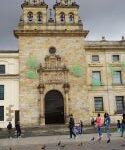 saw in Bogota, and on the way to Villa. The older churches in the capital reflect the wealth of the Church (the independence movement was not anti-clerical; that came much later), including several whose baroque interiors were byproducts of the wealth the new world gave to the old. Perhaps the most striking, however, was the “Cathedral of Salt.” Its origins were in the shrine at which miners prayed before going into the salt mines, or returned from them, thankful of surviving. When the original flooded in the 1990s, miners built a bigger one that was voted the “Number 1 Marvel in Colombia.” All underground, the entrance to the cathedral is via the Stations of the Cross, which ushers into a huge vaulted room that Pope Francis visited last year.
saw in Bogota, and on the way to Villa. The older churches in the capital reflect the wealth of the Church (the independence movement was not anti-clerical; that came much later), including several whose baroque interiors were byproducts of the wealth the new world gave to the old. Perhaps the most striking, however, was the “Cathedral of Salt.” Its origins were in the shrine at which miners prayed before going into the salt mines, or returned from them, thankful of surviving. When the original flooded in the 1990s, miners built a bigger one that was voted the “Number 1 Marvel in Colombia.” All underground, the entrance to the cathedral is via the Stations of the Cross, which ushers into a huge vaulted room that Pope Francis visited last year.
3) Colombian history has been politically troubled for hundreds of years. Bogota owes its settlement partly to the fertile savannah, but partly to the fact that it wasn’t on the ocean; the wealth of Cartagena of the Indies attracted pirates and the Dutch, French, and English who saw looting as a shortcut to riches.The turbulence in 20th century Colombia has contributed to the paucity of colonial-era buildings in Bogota. In 1948, a left-leaning presidential candidate was assassinated (think CIA?), which led to riots resulting in hundreds of homes being burned, and thousands of people killed. More recently, in the 1990s, one of the militant parties (the recent truce lured the FARC into running for government in return for turning in their arms; FARC was the last major anti-government force) seized the Judiciary building, along with hostages. The army besieged the building, with over 100 dead, including most judges, and the building had to be replaced.
Not all the violence has been counterproductive, and it has been interesting to follow the career of “The Liberator,” Simon Bolivar. I saw

where he died, in Santa Marta, last year. This time, we visited the Quinta de Bolivar, a house given to him, which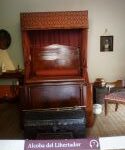 contained a replica of his sword (the M-19, one of the anti-government groups stole it in the 90s, and the recovered original is in the archives; a copy is in the Quinta).
contained a replica of his sword (the M-19, one of the anti-government groups stole it in the 90s, and the recovered original is in the archives; a copy is in the Quinta).
While the center of Bogota is the Plaza de Bolivar, perhaps the most moving place for me was on our way here was the site of the Battle of Boyaca. Fought on August 7, 1819, it marked the end of the war for Independence.
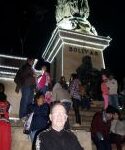
Colombia was the result of an almost a 10 year war, one that began in Bogota

supposedly when a pure-blood Spaniard refused to give a vase to a Colombian-born Spaniard (such were the distinctions made in 1810 when the government in exile—Napoleon’s brother was elevated to the throne–tried to rule the new world). The broken vase supposedly ignited the revolution; it’s in the museum of independence which I also visited.
The political structure that Bolivar sought to build—rather like the European Union of the five countries—collapsed in the politics and past history and personalities of his generals and the countries concerned. Colombia itself has had trouble balancing centralization and federalism. Villa de Leyva faces the geographical diversity that is Colombia—forest, jungle, desert, etc. I look forward to seeing it in daylight. That’s for tomorrow.

